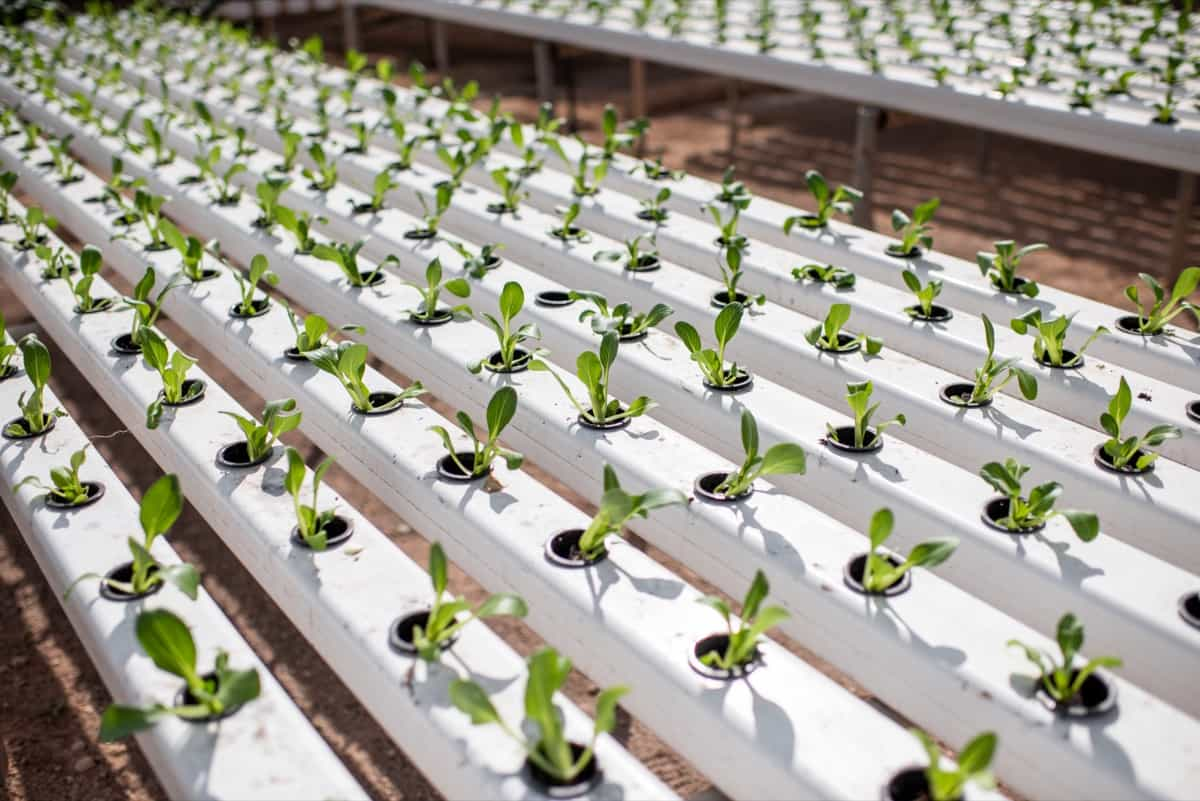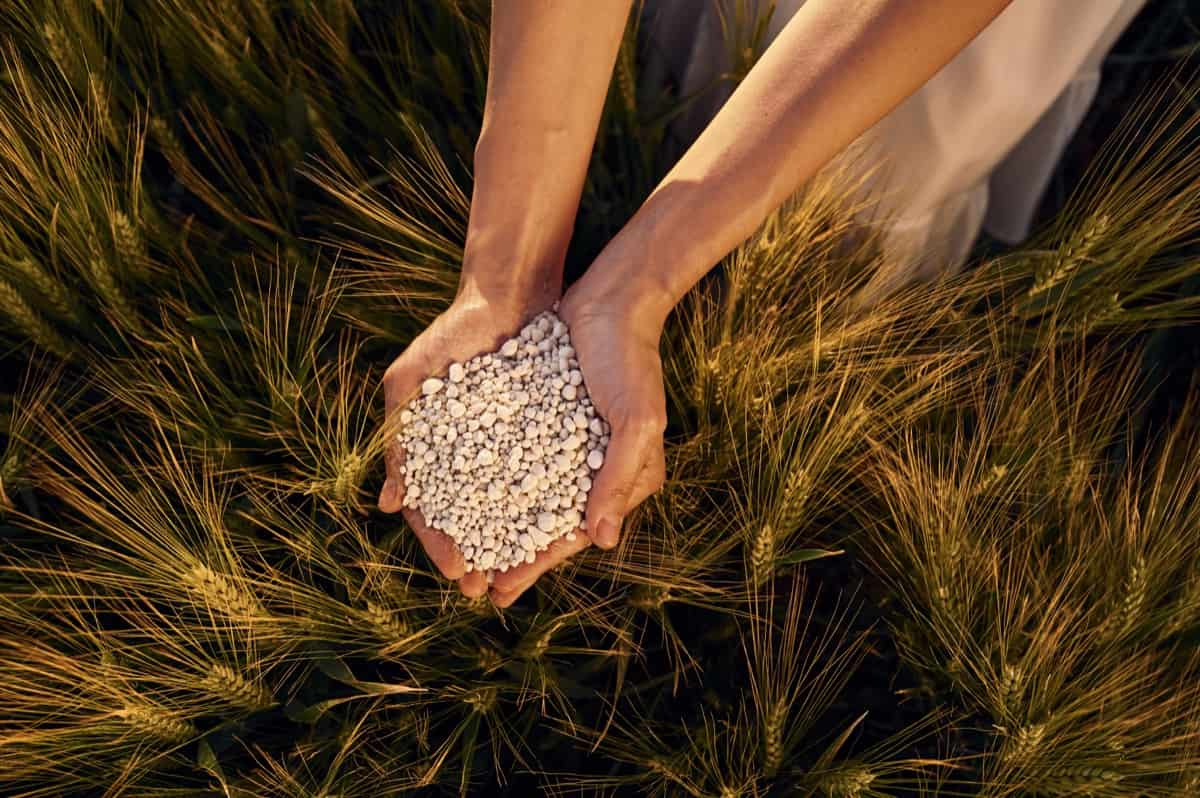Although gardeners are familiar with perlite as a soil supplement, there is a more environmentally friendly option: rice hulls. This article examines the benefits and drawbacks of utilizing perlite and rice hulls for plants from the standpoint of simplicity of usage, the environment, and the economy.

How Much Perlite to Use in a Hydroponic Garden
What are Perlite and Rice Hulls?
Perlite is a naturally occurring volcanic glass that expands when heated, forming lightweight, porous granules. It’s widely used in horticulture to improve soil aeration and drainage. Perlite helps roots access oxygen and prevents waterlogged soil. Rice hulls, on the other hand, are the outer protective layer of rice grains. They’re used as a sustainable alternative to perlite in gardening. Rice hulls also enhance soil structure but decompose over time, enriching the soil with organic matter.
Why Rice Hulls are Good for Plants
Rice hulls are the protective casings on rice grains, similar to corn husks. After rice harvesting, these hulls are traditionally burned as waste. However, they can be repurposed as a valuable soil amendment. Rice hulls are sterilized through parboiling at high heat to eliminate diseases, making them safe for gardening.
Rice Hulls for Plants: Benefits and Drawbacks
Pros of Rice Hulls
- less expensive than perlite
- Looks natural
- Organic products improve the retention of water.
Cons of Rice Hulls
- Can vanish under windy conditions
- Regular replacement is required
Effects on the Environment
The cultivation of rice yields rice hulls, a renewable resource that doesn’t damage ecosystems like peat mining. On the other hand, perlite is an environmentally harmful nonrenewable material that must be mined and releases nitrogen oxide and carbon monoxide emissions.
Rice Husks Help Plants in Several Ways.
- Improve drainage
- Offer silica
- It can be used as mulch to combat weeds. Because rice hulls contain silica, adding them enhances root development and general plant health. It also increases plant resistance to heat, drought, and disease.
The Drawbacks of Rice Hulls
The two primary disadvantages of rice hulls are the ultimate drawback of rice hulls, which compresses the soil, and the possibility of microbial nitrogen consumption leading to a nitrogen shortage in the water.
The Price and Accessibility of Rice Hulls
Though less readily accessible than perlite, rice hulls can still be bought online, at some garden centres, and in specialist shops. They are commonly offered for Rice hulls in India cost between ₹3,000 to ₹10,000 per tonne, while in the US, they range from $39 to $69 per cubic yard.
What is Perlite and Its Role in Hydroponics
In hydroponic farming, perlite—a lightweight, sterile, porous volcanic rock—is essential. Grown without soil in hydroponic systems, perlite is used as a growth substrate. Excellent aeration, moisture retention, and drainage capacities are just a few of its remarkable attributes. For plant roots, perlite helps provide a regulated atmosphere that keeps things from becoming too wet while giving them enough oxygen and moisture.
This promotes strong root growth and healthier plant growth. Perlite is a dependable and long-lasting option for hydroponic enthusiasts looking for an efficient and effective growth medium because it is pH-neutral and doesn’t break down over time.
Importance of Proper Perlite Usage in Hydroponics
Perlite is crucial for hydroponics to maximize plant health and development. It improves drainage aeration and promotes root growth, which is essential for nutrient uptake. The right amount of perlite maintains pH levels, preventing growing media from compacting and promoting root growth. Overuse can lead to nutritional imbalances, root rot, and less optimal plant development. Therefore, understanding and using the right perlite ratios is essential for effective hydroponic farming.
Determining Optimal Perlite Amount
Overdosing perlite in hydroponics may cause several possible problems. An overabundance of perlite can lower the growth medium’s ability to retain water, which makes plants more susceptible to drought stress and fast drying out. Since perlite doesn’t retain nutrients effectively, it could also make it harder to retain nutrients.
In case you missed it: How to Choose the Right Hydroponic Grow Light for Plants

Furthermore, too much perlite might interfere with root stability, making plants weaker and more likely to collapse. Lastly, too much perlite raises the possibility of pH variations and nutritional imbalances in the hydroponic solution, which can harm the health and development of the plants. Thus, it’s imperative to find a balance while adding perlite to hydroponic systems to prevent these issues.
Environmental Aspects of Using Perlite Versus Rice Hulls in Hydroponics.
Because perlite is nonrenewable and requires energy-intensive processing, using it in hydroponics raises environmental problems. Significant carbon emissions result from the heavy gear and energy-intensive heating procedures used in mining perlite from natural sources. Rice hulls, on the other hand, are a sustainable substitute as they are a byproduct of rice farming and are easily accessible and renewable.
When rice hulls are used, perlite’s environmental effect is lessened, making them a more environmentally friendly option for hydroponic systems. Regarding hydroponic farming, rice hulls can reduce resource depletion and promote a more ecologically conscious and sustainable practice.
Cost Implications of Choosing Between Perlite and Rice Hulls in Hydroponics
The cost implications of choosing between perlite and rice hulls in hydroponics can be significant. Perlite is typically more expensive than rice hulls on a per-pound basis, making it a costlier initial investment. However, it offers excellent aeration, water drainage, and longevity, reducing the need for frequent replacements.
Rice hulls, while more affordable upfront, may require more frequent replacement due to decomposition. The overall cost will depend on factors such as the scale of your hydroponic operation, the type of crops you’re growing, and your long-term maintenance goals. Balancing initial costs with long-term savings is key when deciding between these two growing mediums.
Cons of Using Perlite for Plants
- Lightweight and easily blown away
- It can cause respiratory and eye irritation, requiring protective gear
- Nonrenewable resources with environmental impact
- Visually unsightly
- Costly for larger quantities
Pros of Using Perlite
- Prevents root compaction.
- Good for propagating plants.
Cost and Availability of Perlite
Perlite is widely available in stores and online, sold in smaller bags. On average, 2 lbs of perlite can be purchased for about $10, Perlite in India costs between ₹20 and ₹185 per kg, with a 5 kg pack available for ₹999 on online platforms like Amazon. but you may need more than you expect for your gardening needs.
Why Choose Rice Hulls Over Perlite
| Aspect | Perlite | Rice Hulls |
| Growing Medium | Lightweight, porous volcanic glass particles | Lightweight, organic material from rice husks |
| Water Retention | Low water-holding capacity | Moderate water-holding capacity |
| Aeration and Drainage | Excellent drainage and aeration | Good drainage and aeration |
| pH Levels | pH neutral | Slightly acidic |
| Nutrient Holding | Does not retain nutrients | Can release small amounts of silica over time |
| Decomposition | Does not decompose | Decomposes over time, may need replenishing |
| Environmental Impact | Non-renewable resource with mining impact | Renewable and environmentally friendly |
| Cost | Moderately expensive | Generally cost-effective |
| Ease of Sourcing | Widely available | Less common, may require specialty stores |
| Suitability for Hydroponics | Excellent choice for hydroponic systems | Suitable but may require more maintenance |
| Risk of Pathogens | Low risk of harboring pathogens | Low risk of harboring pathogens |
| Root Health | Promotes healthy root growth | Provides some benefits for root health |
| Maintenance | Low maintenance, doesn’t break down | May require replenishment over time |
In case you missed it: Hydroponic Tomatoes Not Flowering: Reasons. How to Fix, and Solutions

Conclusion
In conclusion, determining the appropriate amount of perlite or rice hulls in a hydroponic garden is crucial for successful plant growth. Perlite offers excellent aeration and drainage but requires careful measurement. Rice hulls, while cost-effective and eco-friendly, may need replenishing over time. The choice depends on specific system requirements, budget, and environmental concerns.
- Ultimate Guide to Ossabaw Island Hog: Breeding, Raising, Diet, and Care
- Ultimate Guide to Juliana Pig: Raising Facts, Size, Diet, Care, and Lifespan
- Raising Lleyn Sheep: Disadvantages, Price, Uses, Characteristics, and Care
- Ultimate Guide to Meishan Pig: Breed Facts, Breeding, Raising, and Care
- Ultimate Guide to Teacup Pigs: Raising, Diet, Lifespan, Cost, and Care
- Guide to Raising Poll Dorset Sheep: Facts, Profile, Characteristics, Uses, and Care
- Ultimate Guide to Bighorn Sheep: Characteristics, Diet, Lifespan, Breeding, and Lifecycle
- Ultimate Guide to Raising Katahdin Sheep: Farming Facts, Breed Profile, Uses, and Care
- Ultimate Guide to Raising Oreo Cows: Belted Galloways Farming Facts, Profile, Uses, and Care